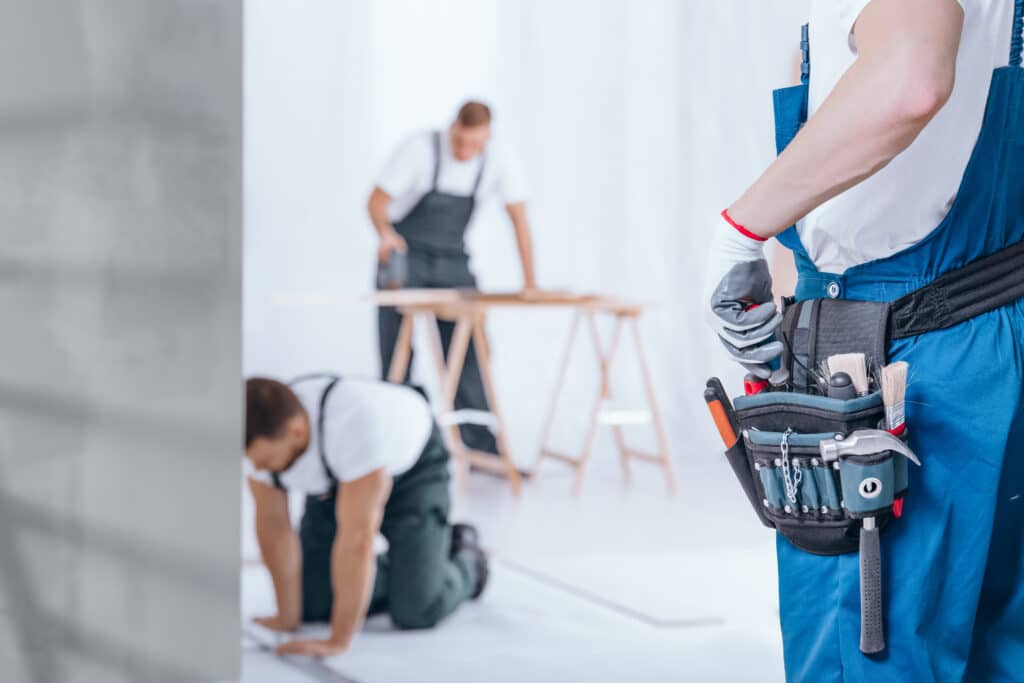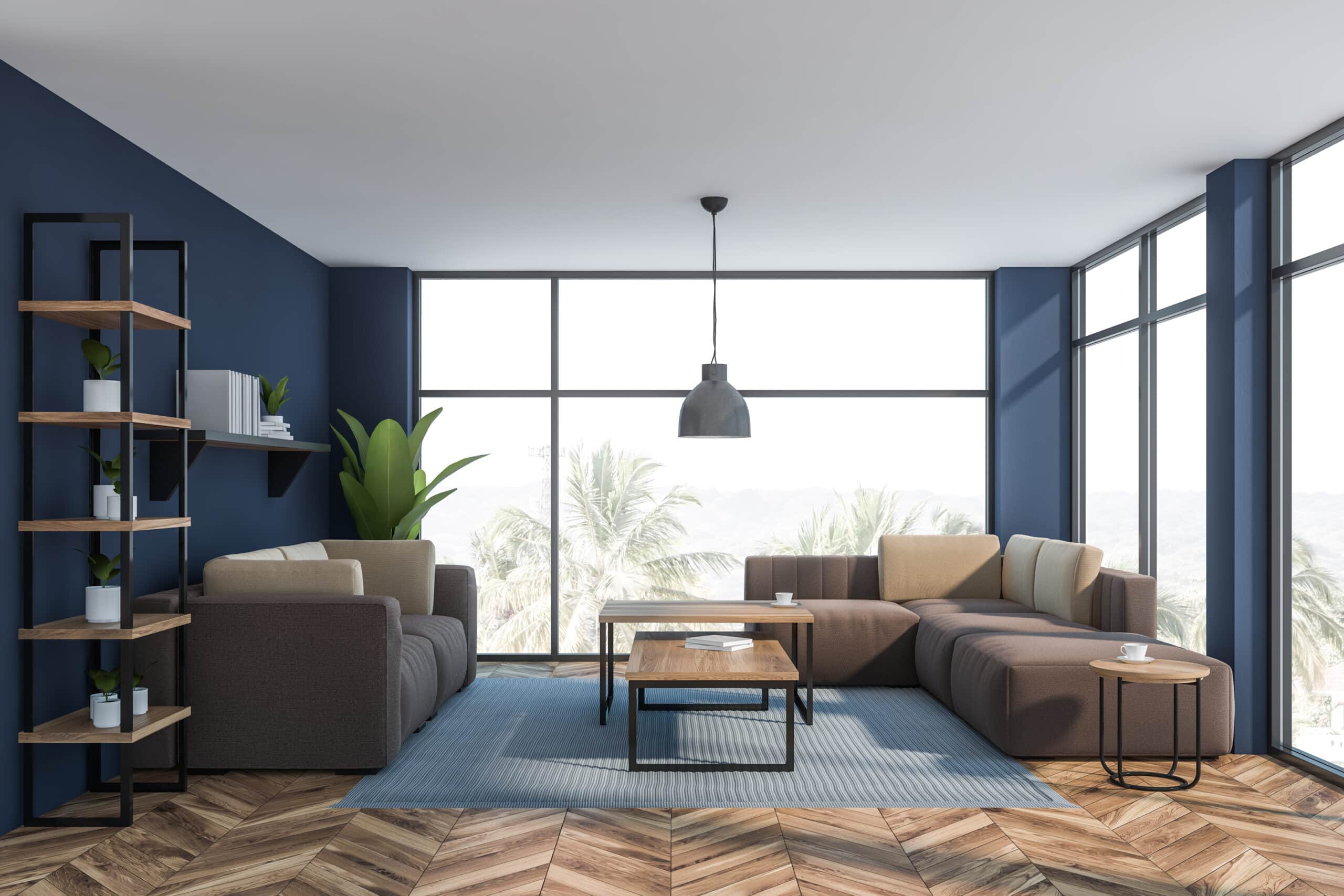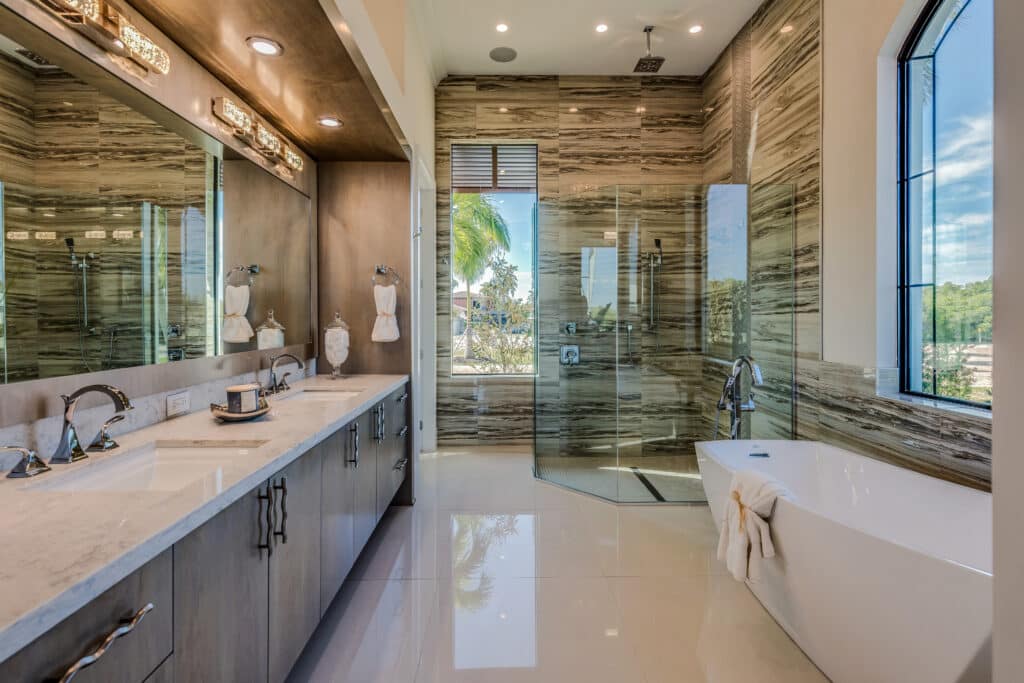Have you ever walked into your home and felt an urge to change everything? If so, you’re not alone—many homeowners experience this itch for transformation. That’s where home remodeling comes in, offering a chance to turn your space into the one you’ve always dreamed of.
Contact Mana Homes Services today at 808-213-0249 to explore home remodeling options and start your journey toward a refreshed living space!
Table of Contents
ToggleThe Basics of Home Remodeling
When you hear the phrase “home remodeling,” you might think of noisy construction, dust everywhere, and endless decisions about paint colors and fixtures. However, remodeling is much more than just a cosmetic facelift for your house.
It’s an opportunity to make your home truly yours, improve functionality, and even increase property value. Let’s delve into what home remodeling is and why it’s worth considering for your next big project.

Understanding Home Remodeling and Its Benefits
Home remodeling encompasses a wide range of projects, from updating a single room to complete overhauls. It can be as simple as replacing outdated fixtures or as complex as knocking down walls to create an open-concept layout. The key is to understand your goals and how remodeling can help achieve them.
So, why consider home remodeling? For many homeowners, it’s about improving the quality of their daily lives. A well-designed kitchen can make cooking more enjoyable, a remodeled bathroom can turn a mundane routine into a spa-like experience, and a revamped living room can become the perfect spot for family gatherings.
Beyond personal satisfaction, remodeling can significantly boost your home’s resale value. Real estate experts often recommend focusing on key areas like the kitchen and bathroom for the best return on investment. If you plan to sell your home in the future, a thoughtful remodel can make it more appealing to potential buyers.
Home remodeling is also a chance to address practical issues like energy efficiency and accessibility. Adding insulation, upgrading windows, or installing smart home technology can reduce energy costs and make your home more eco-friendly.
Likewise, remodeling can accommodate changing needs, such as aging in place or creating a more accessible environment for family members with mobility issues.
Key Considerations Before Remodeling
Define Your Goals and Priorities
- Determine why you are remodeling—whether it’s to enhance aesthetics, improve functionality, or increase resale value.
- Identify which areas of your home need the most attention to focus your efforts and resources effectively.
Set a Realistic Budget
- Research the average costs for your type of remodel and factor in materials, labor, and permits.
- Include a financial buffer to cover unexpected expenses that may arise during the remodeling process.
Choose the Right Time to Remodel
- Consider the best season for your project; outdoor projects are often better in warmer months, while indoor remodels can occur year-round.
- Plan around your personal schedule and major events to minimize disruption to your daily life.
Research and Hire the Right Professionals
- Research contractors and designers with strong track records and relevant experience.
- Verify that your chosen professionals are licensed and insured and request detailed quotes to compare options.
Design with Longevity in Mind
- Opt for timeless designs, durable materials, and practical layouts that will remain functional and appealing for years.
- Avoid overly trendy choices that might date your home quickly.
Planning Your Home Remodel
Embarking on a home remodel can feel like setting sail on a grand adventure. It’s not just about the destination; it’s about ensuring the journey is well-planned, perfectly timed, and on-trend. With the right approach, your home remodeling project can not only reflect your style but can also enhance your lifestyle and increase your home’s value.
Budgeting for Your Home Remodel
Why is budgeting critical? Budgeting acts as your financial blueprint, helping you manage expenses and avoid overspending. Here’s how you can set a sensible budget:
- Understand the Costs: Start by researching the typical costs associated with the type of remodel you are considering. Include everything from materials and labor to permits.
- Prioritize: Identify which parts of your project are must-haves and which are nice-to-haves. Allocate your funds accordingly.
- Plan for the Unexpected: Always include a contingency fund—about 20% of your total budget—for unexpected expenses. Hidden issues like electrical problems or plumbing surprises can often surface during remodeling.
By keeping a close eye on your budget and planning for contingencies, you can ensure that your remodeling project doesn’t turn your financial situation upside down.
Mana Home Services can guide you through this with a detailed quote and financial planning assistance, ensuring there are no surprises.
Choosing the Right Time to Remodel
Timing is everything when it comes to remodeling. Choosing the right time can affect the overall success of your project:
- Seasonal Considerations: Some projects are best done in certain seasons—for example, it’s ideal to paint or extend your home in dryer months.
- Personal Schedule: Consider your family’s schedule. Avoid major remodeling during busy periods like the holiday season or around family events.
- Availability of Contractors: Spring and summer are high seasons for contractors. Plan ahead to ensure the best professionals are available for your project.
Mana Home Services recommends planning your remodel when it aligns with both seasonal advantages and your personal calendar to minimize stress and disruption to your daily life.
Modern Home Design Trends
To ensure your home not only looks current but also maintains its value over time, consider these trending design ideas:
- Sustainable Living: Eco-friendly designs that reduce energy consumption are not only good for the planet but also for your wallet. Think solar panels, energy-efficient appliances, and sustainable materials.
- Smart Home Technology: Integrating technology for home automation, like smart thermostats and advanced security systems, can increase your home’s efficiency and safety.
- Open Floor Plans: These remain popular for a reason. They foster a social environment, increase natural light, and make spaces appear larger.

Room-by-Room Remodeling Guide
When you think about home remodeling, tackling one room at a time can be the most manageable approach. This method minimizes disruption and allows you to focus on the unique needs of each space. Here’s a guide to help you with remodeling tips for the kitchen, bathroom, living room, and bedroom.
Remodeling Your Kitchen
The kitchen is often described as the heart of the home because it’s where families gather, meals are prepared, and memories are made.
When you set out to remodel your kitchen, it’s essential to focus on functionality, aesthetics, and comfort. The first step is to assess the current layout.
Does it provide enough space to move around? Are the countertops and cabinets suitable for your cooking habits? If you find the layout lacking, consider installing a kitchen island. This addition can offer extra workspace, additional storage, and even a casual dining area.
Upgrading appliances can have a substantial impact on the functionality and look of your kitchen. When choosing new appliances, opt for energy-efficient models. Not only do they help lower utility bills, but they are also environmentally friendly.
Stainless steel and smart appliances are particularly popular, providing a sleek, modern look and advanced features like Wi-Fi connectivity and touch screens. These appliances can bring a new level of convenience to your kitchen, allowing you to control and monitor them remotely.
In terms of design, it’s all about finding a balance between style and functionality. Open shelving has become a trendy choice, providing easy access to frequently used items and adding a decorative element.
Two-tone cabinetry is another popular design trend, offering a unique way to add color and contrast. Bold backsplashes are in vogue, with many homeowners opting for vibrant tiles or dramatic patterns.
When choosing colors and materials, aim for a cohesive look that complements the rest of your home. This approach creates a harmonious flow between your kitchen and other living spaces.
Bathroom Upgrades
The bathroom might be one of the smaller rooms in your home, but it has the potential to be a luxurious oasis. A well-planned bathroom remodel can turn daily routines into moments of relaxation. Start by optimizing the space.
If your bathroom feels cramped, consider replacing a bulky bathtub with a sleek walk-in shower. This change can create a sense of openness and improve accessibility. Floating vanities are another smart choice, as they make the room feel larger while providing storage space.
Upgrading fixtures can dramatically change your bathroom’s aesthetic. Choose high-quality materials for faucets, showerheads, and towel racks to ensure durability and style.
Brushed nickel and matte black are popular choices for a modern, elegant look. To add a focal point to your bathroom, consider incorporating a statement mirror or unique lighting fixtures. This adds character and makes the space more visually appealing.
For a touch of luxury, consider spa-like features. Heated floors can make chilly mornings more comfortable, while rainfall showers provide a relaxing experience. A large soaking tub can be an indulgent addition, perfect for unwinding after a long day.
These features not only enhance your bathroom experience but can also increase your home’s value, making it more attractive to potential buyers.
Storage is another critical aspect of bathroom remodeling. Incorporate plenty of storage solutions to keep the space tidy and organized. Medicine cabinets, built-in shelving, and vanity drawers can help you manage bathroom essentials without cluttering the space.
Living Room and Bedroom Remodeling Ideas
The living room and bedroom are spaces where you relax and unwind. When remodeling these rooms, focus on comfort and creating a welcoming atmosphere. Here are some tips to get you started:
Living Room Layout: The layout of your living room should facilitate easy movement and conversation. Consider an open-concept design to create a spacious feel. Add a focal point, like a fireplace or entertainment center, to anchor the room.
Comfortable Furnishings: Comfort is crucial in both the living room and bedroom. Choose plush sofas, cozy armchairs, and supportive beds. In the bedroom, consider a memory foam mattress or an adjustable bed frame for customized comfort.
Personalized Décor: Personal touches can make your living room and bedroom feel like home. Add artwork, family photos, and decorative items that reflect your personality. In the bedroom, opt for soothing colors and soft lighting to create a relaxing environment.
Remodeling your home, whether it’s the kitchen, bathroom, living room, or bedroom, is a chance to enhance your living space and add value to your property.
By focusing on functionality, modern design trends, and personal touches, you can create a home that suits your lifestyle and stands out in the market.
Sustainable Home Remodeling
When considering a home remodeling project, sustainability is more than just a buzzword—it’s a way to make your home more energy-efficient, environmentally friendly, and cost-effective in the long run.
By incorporating eco-friendly features and choosing sustainable materials, you can create a space that reflects your values while also benefiting the planet.
Incorporating Energy-Efficient Features
Energy efficiency is a crucial aspect of sustainable home remodeling. It reduces your carbon footprint and can lead to significant cost savings over time. Here are some key features to consider:
Insulation and Windows: Proper insulation and energy-efficient windows can greatly improve your home’s energy efficiency. Consider double-glazed windows and high-quality insulation in the attic and walls to keep your home warm in winter and cool in summer, reducing energy costs.
Smart Thermostats and Lighting: Installing a smart thermostat allows you to control your home’s temperature remotely, leading to optimized energy use. Additionally, switching to LED lighting can lower energy consumption while providing better illumination.
Solar Panels and Renewable Energy Sources: Solar panels are a popular way to harness renewable energy. They can power your home and even allow you to sell excess energy back to the grid. If solar isn’t an option, explore other renewable energy sources like wind or geothermal systems.
Choosing Sustainable Materials for Your Remodel
Selecting sustainable materials is another way to ensure your remodel is environmentally friendly. Sustainable materials are often more durable and have a lower environmental impact. Here’s how to make sustainable choices:
Recycled and Reclaimed Materials: Using recycled or reclaimed materials, like reclaimed wood for flooring or recycled glass for countertops, helps reduce waste and gives your remodel a unique, rustic charm.
Low-VOC Paints and Finishes: Volatile organic compounds (VOCs) in paint and finishes can harm indoor air quality. Opt for low-VOC or zero-VOC products to create a healthier environment for you and your family.
Sustainable Flooring Options: Consider sustainable flooring materials like bamboo or cork, which are renewable and durable. These materials offer a unique look and are available in various styles to match your decor.
Benefits of Eco-Friendly Home Improvements
Eco-friendly home improvements offer a range of benefits for the environment and your wallet. These advantages make sustainable remodeling an appealing choice for many homeowners.
One of the most significant benefits is the reduced environmental impact. By incorporating energy-efficient features and choosing sustainable materials, you can lower your home’s carbon footprint, contributing to a healthier planet. This approach helps reduce waste and minimizes the use of non-renewable resources.
Additionally, eco-friendly improvements often lead to long-term cost savings. While sustainable features may require a higher initial investment, they generally pay off over time.
Energy-efficient appliances, solar panels, and smart thermostats can all lead to lower utility bills. This can be especially attractive for homeowners looking to reduce their monthly expenses.
Another notable benefit is the healthier living environment that eco-friendly home improvements can create. Using low-VOC paints and focusing on indoor air quality can result in fewer respiratory issues and a more comfortable space for you and your family. This contributes to a better overall quality of life, reinforcing the value of sustainable remodeling.
DIY vs. Professional Remodeling
When it comes to home remodeling, you might wonder if you should roll up your sleeves and do it yourself or leave it to the pros. The answer often depends on the complexity of the project, your skills, and your comfort level with tools and construction. Let’s explore when to tackle a project yourself and when it’s best to call in a professional.
Deciding Between DIY and Professional Help
Taking the DIY route in home remodeling can be a thrilling and rewarding experience. It gives you the freedom to make your own decisions, explore your creativity, and achieve that satisfying feeling of accomplishment when a project is complete.
DIY can also be a cost-effective solution, particularly for smaller projects that don’t require specialized skills. Tasks like painting a room, replacing light fixtures, or assembling furniture are typically within the scope of DIY enthusiasts.
However, when it comes to more complex tasks, like electrical work, plumbing, or structural changes, it’s best to leave it to the professionals.
These projects require specific skills, certifications, and safety knowledge that most homeowners don’t possess. Mistakes in these areas can not only lead to costly repairs but also pose significant safety risks to you and your family.
A faulty electrical connection or improper plumbing installation can cause fires, floods, or other hazardous conditions.
To decide whether a project is suitable for DIY or requires professional help, consider your experience level and the complexity of the task. If you’re familiar with the tools and techniques required, and you have the time to dedicate to the project, DIY can be a fulfilling option.
However, if you’re unsure about any aspect of the project, it’s wise to consult with a professional. Even if you plan to do some of the work yourself, a professional can provide guidance, ensuring you avoid common pitfalls and comply with safety codes.
Tips for Successful DIY Home Projects
If you decide to take on a DIY remodeling project, preparation is key. Start by planning the project in detail, including a timeline and a list of materials. This step helps you stay organized and reduces the chances of unexpected delays.
Invest in quality tools, as they can make your work more efficient and accurate. Research different techniques and watch tutorials to learn the best practices for your project. Don’t be afraid to ask for help from friends or family, especially if they have experience in home remodeling.
Safety should always be a top priority. Wear protective gear like gloves, goggles, and masks when necessary. Ensure you understand how to use power tools correctly and never take shortcuts that could compromise safety. If you encounter unexpected issues or feel out of your depth, pause and consult with a professional to avoid costly errors.
Finding and Choosing the Right Contractors
When your remodeling project requires professional expertise, finding the right contractor is crucial. Start by asking for recommendations from friends or neighbors who have completed similar projects. Research contractors online and read reviews to gauge their reputation.
Look for contractors with appropriate licensing and insurance to protect yourself from liability. Once you’ve identified a few potential candidates, request detailed quotes and timelines to compare their offerings. A reliable contractor should be transparent about costs, deadlines, and any potential challenges.
During your selection process, communication is key. Choose a contractor who listens to your ideas and communicates clearly about what is feasible. A good contractor will work with you to bring your vision to life while ensuring safety and compliance with local building codes.
Navigating Permits and Legal Requirements
When planning a home remodeling project, understanding permits and legal requirements is critical. It ensures that your remodel complies with local regulations and avoids costly fines or delays. Let’s explore building codes and permits and how to address legal considerations in home remodeling.
Understanding Building Codes and Permits
Building codes are a set of regulations that ensure safety and consistency in construction. They cover various aspects of construction, such as structural integrity, electrical systems, plumbing, and fire safety. Before starting any remodeling project, it’s essential to familiarize yourself with local building codes to ensure compliance.
Permits are official documents that grant you permission to carry out specific construction or remodeling work. They are required for most major projects, such as room additions, electrical work, plumbing changes, or structural alterations. The permit process involves submitting detailed plans to your local building department for approval. The complexity of obtaining permits depends on the scope of your project and local regulations.
Failing to obtain the necessary permits can lead to serious consequences. You could face fines, be required to undo work, or encounter issues when selling your home.
To avoid these problems, always check with your local building department to determine which permits you need for your project. If you’re working with a contractor, they should be able to guide you through the permit process.
Legal Considerations in Home Remodeling
In addition to building codes and permits, there are other legal considerations to keep in mind during a home remodeling project. One of the most important is ensuring you have the proper insurance coverage.
This protects you from liability in case of accidents or damage during construction. If you’re hiring contractors, ensure they have adequate insurance and workers’ compensation coverage.
Zoning laws can also impact your home remodeling project. These laws regulate land use and may restrict certain types of construction or remodeling in specific areas. Before making significant changes to your property, check your local zoning laws to ensure compliance. This step can help you avoid costly setbacks and ensure your project goes smoothly.
Another legal consideration is the presence of hazardous materials in your home. Older homes may contain asbestos, lead-based paint, or other harmful substances. Before beginning demolition or construction, have your home inspected for hazardous materials. If they’re found, you’ll need to hire specialized professionals to remove them safely and legally.
Lastly, consider any homeowner association (HOA) rules or community guidelines that might affect your home remodeling project. Some HOAs have strict rules about exterior changes, landscaping, or other aspects of home remodeling. Always review your HOA guidelines and seek approval for your project if necessary.
Technology and Innovation in Home Remodeling
With technology transforming every aspect of our lives, it’s no surprise that home remodeling has seen a surge in innovative tools and smart home technologies.
Embracing these advancements can make your home more efficient, secure, and comfortable. Let’s explore some of the most significant smart technologies and innovative tools in modern home remodeling.
Smart Home Technologies to Consider
Smart home technology has revolutionized the way we interact with our living spaces. It allows you to control everything from lighting to security with just a few taps on your smartphone. Here’s a look at some popular smart home technologies to consider for your remodel:
Smart Thermostats: These devices let you control your home’s temperature remotely, helping you save on energy costs. They can learn your schedule and adjust the temperature accordingly, providing comfort while reducing energy use.
Smart Lighting: With smart lighting, you can change the ambiance of a room with a simple voice command or smartphone app. This technology allows you to set schedules, control brightness, and even change colors to suit your mood.
Home Security Systems: Smart security systems offer more than just alarms. They include cameras, motion detectors, and doorbell cameras that send alerts to your phone. This technology provides peace of mind by allowing you to monitor your home even when you’re away.
Smart Appliances: From refrigerators that can create shopping lists to ovens that can preheat remotely, smart appliances are designed to make your life easier. They can also help you save energy by optimizing usage.
Innovative Home Remodeling Tools and Techniques
Innovation in home remodeling extends beyond smart technology. Modern tools and techniques can streamline the remodeling process and improve the quality of the finished product. Here are some noteworthy innovations:
3D Printing: 3D printing allows for rapid prototyping and custom fabrication of parts. This technology is particularly useful for creating unique design elements or replicating hard-to-find components for older homes.
Drones for Inspection: Drones can be used to inspect hard-to-reach areas like rooftops and chimneys. This technology helps identify issues without the need for scaffolding or extensive safety equipment, making the inspection process safer and more efficient.
Laser Measurement Tools: Laser-based measuring devices offer high precision and accuracy. These tools can quickly measure large areas, ensuring your remodel is precise and reducing the risk of errors during construction.
Virtual Reality (VR) Design: VR allows you to visualize your home remodeling before construction begins. This technology gives you a 3D view of your space, helping you make informed design choices and avoid costly changes later.
By incorporating smart home technologies and innovative tools into your home remodeling project, you can enhance your home’s functionality and create a more enjoyable living environment. These advancements not only make your home smarter but also contribute to a more efficient and streamlined home remodeling process.
Avoiding Common Remodeling Pitfalls
Embarking on a home remodeling project is exciting, but it can also be filled with unexpected challenges. From budgeting blunders to construction mishaps, there’s a lot that can go wrong. To help you navigate these potential pitfalls, let’s examine common mistakes and how to avoid them, along with strategies for handling unforeseen obstacles.
Avoiding Home Remodeling Mistakes
One of the most common mistakes in home remodeling is underestimating the cost. Many homeowners create a budget but fail to include a contingency for unexpected expenses. This can lead to stress and project delays. To avoid this, always build in a buffer—about 10-20%—to cover surprise costs.
Another common error is not obtaining the necessary permits before starting construction. This oversight can result in fines, forced rework, or even project shutdowns.
Always check with your local building department to ensure you comply with regulations. If you’re unsure, consult with your contractor to confirm that all permits are in order.
Poor planning is another frequent pitfall. If you don’t have a clear vision for your home remodeling, it’s easy to get sidetracked or make costly changes midway through the project.
To avoid this, create a detailed plan before you begin, including a timeline and a list of materials. Having a solid plan keeps your project on track and minimizes disruptions.
Communication breakdowns with contractors can also lead to problems. Misunderstandings about expectations or timelines can cause frustration for both sides. To avoid this, establish clear communication from the start. Hold regular meetings with your contractor to discuss progress, address concerns, and adjust plans as needed.
Handling Unexpected Challenges During Home Remodeling
No matter how well you plan, unexpected challenges are almost inevitable in home remodeling. The key is to stay flexible and prepared for anything. If you encounter an issue with structural damage or faulty wiring, it’s crucial to address it immediately. Ignoring such problems can lead to bigger headaches down the road.
If you face delays due to weather, supply chain issues, or other external factors, try to keep the project moving in other areas. This might involve working on different aspects of the home remodeling or adjusting the timeline to accommodate delays. The goal is to stay productive and keep the momentum going.
Another challenge can be living through the home remodeling process. Dust, noise, and restricted access to parts of your home can be disruptive.
If possible, plan to live elsewhere during significant renovations, or set up a designated area where you can escape the chaos. Communication with your contractor can also help minimize disruptions and ensure a smoother process.
Finally, if you’re feeling overwhelmed by unexpected challenges, don’t hesitate to ask for help. Reach out to your contractor or other professionals for advice on how to proceed. The right support can make a big difference in successfully navigating the complexities of home remodeling.
By avoiding common mistakes and learning how to handle unexpected challenges, you can ensure your home remodeling project stays on course. Proper planning, clear communication, and flexibility will help you create a space that meets your needs and exceeds your expectations.

Mana Home Services: Your Home Remodeling Experts
When it comes to home remodeling, choosing the right team can make all the difference. At Mana Home Services, we bring years of experience, a passion for quality, and a commitment to customer satisfaction.
Whether you’re dreaming of a complete home transformation or just a single-room makeover, we have the expertise and resources to turn your vision into reality.
Experienced and Reliable Professionals
Experience counts when it comes to remodeling your home. Our team at Mana Home Services comprises skilled professionals who have tackled projects of all sizes and complexities.
From architects and designers to builders and contractors, we bring together the best talent to ensure your project is a success.
Reliability is key in the home remodeling business. We understand that you need a team that shows up on time, communicates clearly, and delivers results.
Our professionals are not only experts in their respective fields but also reliable partners who keep you informed every step of the way. This reliability has earned us a reputation for excellence and many satisfied customers.
Tailored Solutions to Meet Your Needs
No two home remodeling projects are the same, and that’s why we offer tailored solutions to meet your unique needs. Whether you want to update a kitchen, renovate a bathroom, or add an entire new wing to your home, we take the time to understand your goals and preferences.
Our approach is flexible and personalized, ensuring that your project reflects your style and fits your budget.
Customization is at the heart of what we do. We work closely with you to create a design that suits your lifestyle and tastes. Our team guides you through the process, offering expert advice on everything from materials to design trends. This collaborative approach ensures that the final result is a space you’ll love.
Quality and Satisfaction Guaranteed
At Mana Home Services, quality is non-negotiable. We use the finest materials and employ the latest techniques to ensure that every aspect of your home remodeling project is top-notch.
Our commitment to quality extends to our craftsmanship and attention to detail. From the initial planning stages to the final touches, we make sure everything meets the highest standards.
Your satisfaction is our ultimate goal. We back our work with a quality guarantee, giving you peace of mind that your home remodeling project is in good hands.
If anything doesn’t meet your expectations, we’ll work with you to make it right. This dedication to customer satisfaction is what sets us apart and keeps our clients coming back for future projects.

FAQs on Home Remodeling
How Do I Budget Effectively for a Home Remodeling Project?
Budgeting starts with researching average costs for similar projects, including materials, labor, and permits. It’s wise to add a 10-20% buffer for unexpected expenses. Obtain multiple quotes from contractors to set a realistic budget and avoid surprises.
What Are the Best Areas of the Home to Remodel for Resale Value?
Focus on high-impact areas like the kitchen and bathroom, as these are most attractive to buyers. Kitchen upgrades with energy-efficient appliances and modern design trends can boost your home’s value. Bathrooms with walk-in showers and double vanities also make a lasting impression.
How Long Does a Typical Home Remodeling Take?
The timeline depends on the scope of the project, ranging from a few weeks for a small-scale update to several months for a major overhaul. Factors like permits, contractor schedules, and material availability can affect timelines. Discuss with your contractor to set realistic expectations.
What Should I Look for When Hiring a Remodeling Contractor?
Choose a contractor who is licensed, insured, and has a strong reputation. Ask for references and read reviews to assess their quality of work. Clear communication is crucial, so ensure they understand your vision and can provide detailed quotes and timelines.
Can I Live in My Home During the Remodeling Process?
It depends on the scope of the remodel and your tolerance for disruption. Smaller projects might allow you to stay at home, but significant construction could require temporary accommodations. Discuss this with your contractor to find the best solution for your situation.


